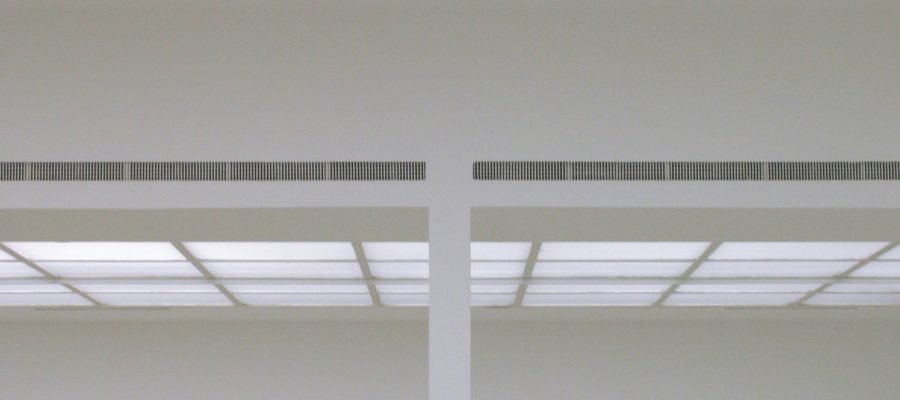An interesting book in context to this week’s lecture – but also probably posthuman aesthethics overall – is Brian O’Doherty’s “Inside the White Cube. The Ideology of the Gallery Space”. In the first essay of the publication O’Doherty brilliantly describes the white cube as the ideal gallery space:
The ideal gallery subtracts from the artwork all cues that interfere with the fact that it is “art.” The work is isolated from everything that would detract from its own evaluation of itself. This gives the space a presence possessed by other spaces where conventions are preserved through the repetition of a closed system of values. Some of the sanctity of the church, the formality of the courtroom, the mystique of the experimental laboratory joins with chic design to produce a unique chamber of esthetics.
[O’Doherty, 1999: 14]
His main interest however is not how one creates the ideal space for exhibitioning art but rather the various implications these rooms are burdened with. White cubes are highly artificial constructs, this of course reflects on the art shown within and also on the beholder of said art. While these rooms have the benefit of putting art front and center of everyone’s attention, they also tend to reduce the gallery’s visitor to his or her role as a beholder, a plain eye, intellectualized but to some degree also inhuman. As such, these spaces are reserved for some pieces of modern art, mainly conceptual art, while they can be detrimental to others, such as naturalist paintings.
While listening to this weeks lecture I had to ask myself how one would ideally exhibit the pieces touched upon. I came to the conclusion, that they would probably thrive in a white cube for two reasons already to be found in above quote: First, as they use material usually reserved for a field outside of art, they would benefit from the white cube’s self-referentiality, secondly – of course – the white cube’s “mystique of the experimental laboratory” would lend a quite fitting context of presentation to said artworks.
O’Doherty, Brian. Inside the White Cube. The Ideology of the Gallery Space. Berkely: University of California Press, 1999.

Leave a Reply
2 Comments on "Brian O’Doherty’s “Inside the White Cube. The Ideology of the Gallery Space”"
Hi Lara, it’s interesting to read your reflections on how some of the pieces mentioned in the lecture could be exhibited. In a way the last example, Guy Ben-Ary’s CellF, forces us to think out of the box in that regard, doesn’t it? When the iPS technology is used to create an entire performance? I think this work both shows us the shift from art object to system that we discussed in the first lesson, but also a shift towards the performative, which might be a bit more difficult to fit into the white cube. What do you think?